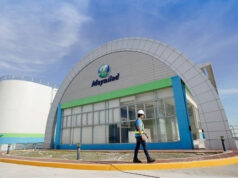Fitch Solutions sees construction-sector growth accelerating
THE construction industry is expected to grow 9.4% this year, remaining one of the fastest-growing markets in Southest Asia, according Fitch Solutions Macro Research.
In a note issued Friday, Fitch Solutions, the research arm of Fitch Group, projected the sector to grow faster than the 2019 rate of 7.7%, “driven by both public spending and foreign assistance and investments.”
Fitch Solutions described the construction sector as a “regional outperformer” lagging only the construction sectors of Cambodia, Myanmar and Laos.
“This (9.4% growth in 2020) means that the country will remain one of the fastest-growing construction markets in the region, only behind the frontier markets such as Cambodia, Myanmar and Laos, all of which have smaller construction markets compared to the Philippines,” it said.
According to its Key Projects Database of the entire infrastructure sector, rail projects “are expected to spearhead growth” this year with $33.859 billion worth of projects that are in the planning and construction stages.
“While not all projects in the pipeline are expected to break ground and contribute to the country’s construction-sector GDP (gross domestic product) this year, we highlight the rail sector as an important contributor of short-term construction-sector growth, with several projects in the National Capital Region progressing well,” it said.
Fitch Solutions also noted that the government’s spending plan for the construction sector this year will serve as a growth driver, supported by the increase in allocations for the two major infrastructure implementing agencies.
Out of this year’s P4.1 trillion spending plan, the Department of Public Works and Highways (DPWH) has an allocation of P534.3 billion (up 15% year-on-year) while the Department of Transportation (DOTr) has P147 billion (up 112% year-on-year).
It also expects the DPWH’s budget to benefit the road and water sectors while the DoTr is expected to use a large chunk of its bugdet to fund rail projects.
The Education department’s P36 billion allocation can also be used to build more school buildings and classrooms and rehabilitate school facilities, it said.
“Agriculture for the construction of farm-to-market roads to facilitate the flow of goods between production areas and demand centers, will provide a further boost to overall construction activity within the country in the coming years,” it added.
The report said the government’s “Build, Build, Build” program will continue to boost investment in the construction sector but the actual execution of projects “will have a heavy influence on growth of the sector over the short term.”
“Build, Build, Build’ will remain a key policy supporting growth of the infrastructure sector in the Phillippines over the short-term. We maintain an optimistic view on the execution of BBB-related projects, with the power and rail sectors expected to outperform,” it said.
However, Fitch Solutions flagged possible risks to the positive outlook, such as the government’s ability to attract sufficient foreign direct investment (FDI) and official development assistance (ODA) as well as quality bidders to implement the projects.
“Failure to do so will once again result in a lack of progress and will be a downside risk for construction sector growth. This is especially so after the government revoked water concession extension agreements with two private sector players in December 2019, highlighting regulatory risks associated with contracts agreed between the public and private sectors, undermining investor confidence,” it said. — Beatrice M. Laforga



